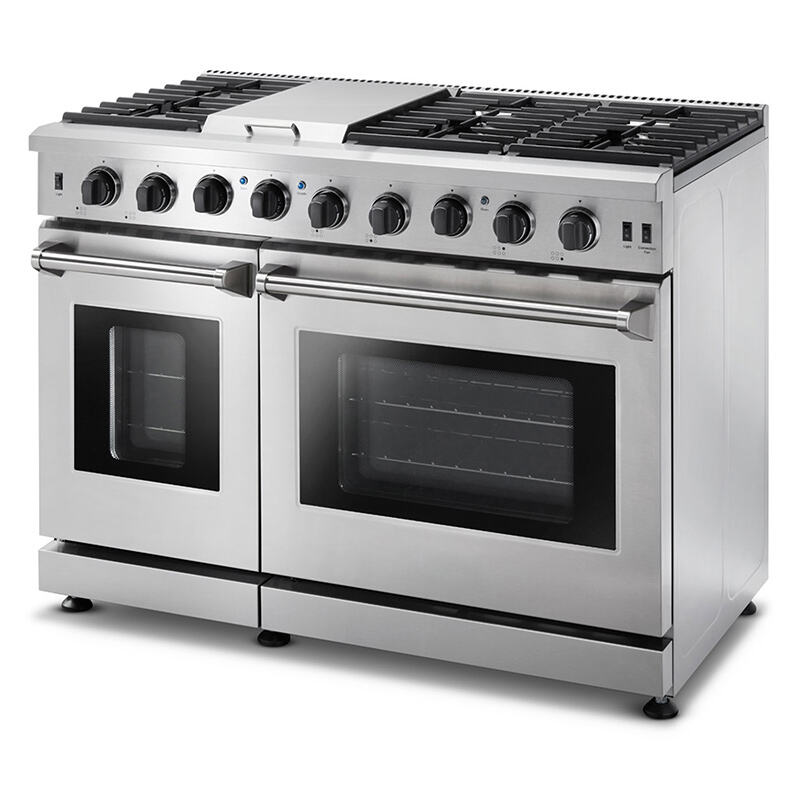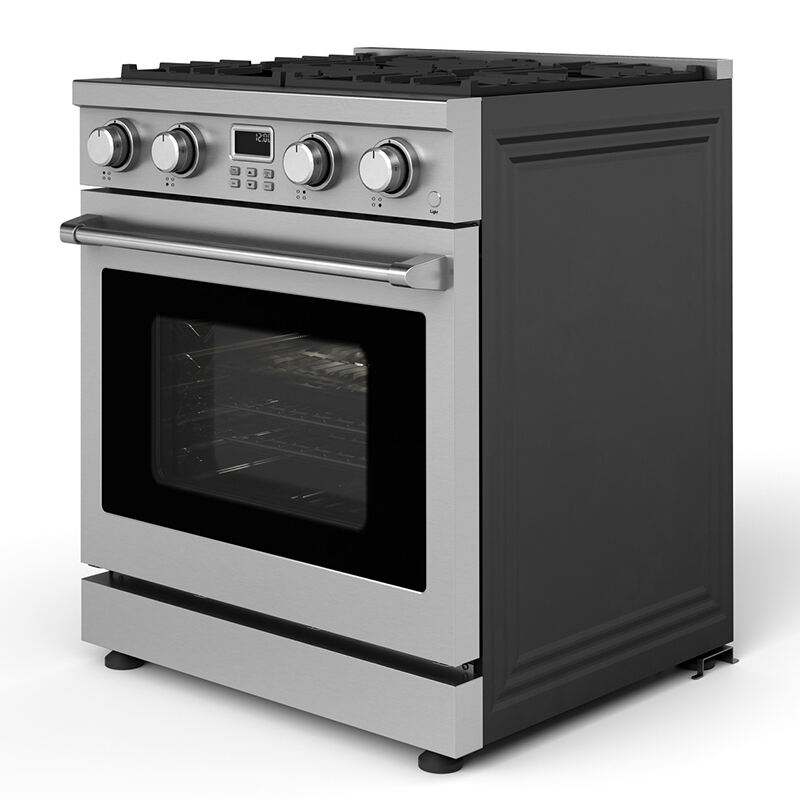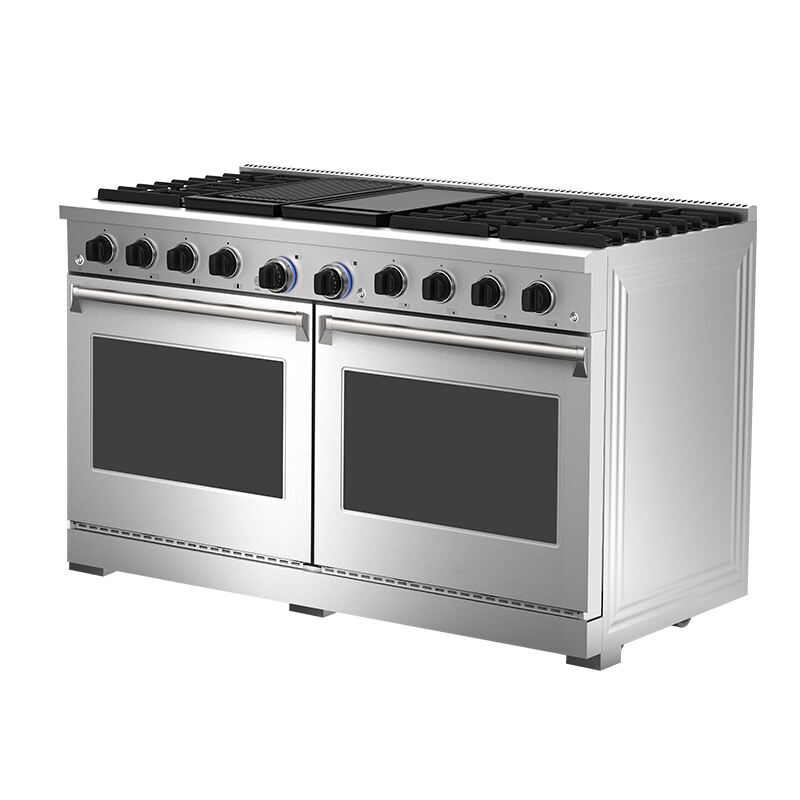What to Look for in a High-Performance Range?
Burner Power and BTU Output in High-Performance Ranges
Importance of Multiple Burner Configurations
Multiple burner configurations are essential in high-performance ranges as they allow for simultaneous cooking tasks, thereby improving efficiency in a busy kitchen environment. With various burner sizes, professional chefs can accommodate different pot and pan sizes, catering to diverse culinary techniques seamlessly. This flexibility is crucial in a professional setting where precision and speed are paramount. Enhanced control over heat distribution leads to improved cooking results; this is vital for chefs aiming to perfect their culinary creations. Culinary experts consistently demonstrate that ranges equipped with adjustable burner configurations offer greater flexibility and efficiency in meal preparation, making them indispensable in commercial kitchens.
Understanding BTU Ratings for Precision Cooking
The BTU ratings of burners are a critical factor in precision cooking, with higher BTU values indicating a burner’s heat output and faster cooking times. For chefs, precise BTU output allows achieving specific cooking temperatures, which is essential for executing different cuisines accurately. Comparative analysis reveals that ranges with higher BTU ratings provide superior searing abilities for meats, ensuring optimal cooking outcomes. Studies have shown that optimal BTU ratings can significantly shorten cooking durations while enhancing the flavor profile of dishes, making them a key consideration for culinary professionals. Understanding and utilizing these ratings effectively can transform the cooking experience, leading to outstanding results in both flavor and presentation.
Oven Types and Cooking Versatility
Dual Oven Functionality for Multi-Tasking
Dual ovens present chefs with the ability to cook various dishes at different temperatures simultaneously, thereby streamlining the cooking process. This configuration is especially advantageous during high-demand periods in professional kitchens, where efficiency and speed are paramount. Recent research indicates that dual oven-equipped kitchens can boost productivity and minimize wait times, making them invaluable assets in culinary settings. Furthermore, high-performance ranges with dual ovens often come with advanced features like self-cleaning modes and tailored cooking settings, enhancing their functionality and appeal to chefs looking for precision and versatility in their culinary endeavors.
Convection Technology for Even Heat Distribution
Convection ovens are engineered with fans that circulate hot air, ensuring that food is cooked evenly and browned uniformly. This innovation not only shortens cooking durations but also minimizes energy usage, presenting itself as an eco-friendly option for kitchens. Convection technology is lauded by culinary experts, particularly for baking pastries and bread, due to its ability to uphold consistent heat levels. Studies further suggest that integrating convection in high-performance ranges can result in superior dish quality, giving chefs the confidence to produce exquisite baked goods and roasted dishes with precision and ease.
Top High-Performance Ranges for Professional Kitchens
LRG4807U 48" Gas Range: Dual Ovens and Griddle Flexibility
The LRG4807U 48" Gas Range stands out with its dual ovens, which provide chefs the ability to cook multiple dishes simultaneously at varying temperatures, enhancing meal preparation efficiency. With the griddle option, this range also allows for the convenient cooking of breakfast items, further enhancing its versatility. User reviews consistently praise its user-friendly design and superior performance, especially in high-demand kitchen environments. Statistics indicate that professional chefs favor ranges that integrate multiple cooking functionalities for effective kitchen operation.
CRG3004U 30" Professional Gas Range: Convection Precision
The CRG3004U 30" Professional Gas Range is equipped with convection technology that ensures precise cooking, accommodating both delicate and robust dishes effortlessly. Its compact design is perfect for small kitchen spaces while still delivering excellent performance results. Industry professionals praise its effectiveness in providing consistent, professional-grade outcomes, supported by performance metrics that show a notable increase in consistency thanks to convection features.
LRG60E 60" Dual Fuel Range: Commercial-Grade Capacity
The LRG60E 60" Dual Fuel Range combines the power of gas and electric cooking methods, providing versatility in heat control for various culinary styles. Its commercial-grade capacity is ideal for accommodating large volume cooking, making it an excellent choice for catering and restaurant settings. Market trends highlight an increasing preference for dual fuel ranges among culinary experts due to their enhanced performance and flexibility. Furthermore, this model is appreciated for its durability and high heat retention, appealing to users in search of long-lasting kitchen appliances.
Durability and Safety Certifications
Stainless Steel Construction for Longevity
Stainless steel is highly preferred in professional kitchens due to its remarkable resistance to corrosion and ease of cleaning, ensuring longevity and operational efficiency. The robustness of stainless steel construction enhances the durability of kitchen appliances, effectively reducing repair and replacement costs over time. Industry reports consistently show that appliances made from stainless steel outperform those constructed from other materials, enduring the demanding conditions of commercial kitchens. Furthermore, maintenance tips stress the importance of using high-quality stainless steel to maintain kitchen hygiene, as it provides a cleaner surface less prone to harboring bacteria.
CSA and UL Certification Standards
CSA (Canadian Standards Association) and UL (Underwriters Laboratories) certifications are crucial benchmarks for ensuring safety compliance in kitchen appliances. These certifications offer peace of mind to users, signifying that a product has undergone and passed rigorous safety evaluations. For many commercial kitchens, using CSA and UL-certified appliances is not just a preference but a requirement to align with kitchen regulations and meet insurance policy stipulations. Research has demonstrated a direct correlation between the reduction of kitchen hazards and the implementation of certified appliances, highlighting their importance in promoting a safe culinary environment.
Choosing the Right Size and Configuration
48" vs 30" vs 60" Range Comparisons
Choosing the right size range is pivotal for optimal kitchen functionality. Factors such as kitchen space, cooking needs, and anticipated meal volume should guide this decision. A larger range, such as a 60-inch model, typically offers more burners and ovens, catering to higher meal volumes and providing extensive cooking flexibility. In contrast, a 30-inch range may be more suitable for smaller spaces or less frequent cooking sessions. Comparative studies highlight that the size of a range significantly impacts cooking efficiency and workflow, especially in busy kitchen environments. Experts in kitchen design often recommend selecting a range size that aligns with your meal production scale to maximize efficiency and meet your cooking requirements effectively.
Built-In vs Freestanding Installation
Deciding between a built-in or freestanding range mainly revolves around kitchen design and functionality preferences. Built-in ranges seamlessly integrate with the kitchen, providing a sleek and customized aesthetic that modern home chefs often desire. On the other hand, freestanding ranges offer more versatility in terms of placement and are generally more cost-effective, making them attractive for a broader range of kitchen styles. Notably, many new range designs now blend the benefits of both built-in and freestanding features, offering flexible solutions that adapt to various kitchen layouts. According to consumer reports, the choice between built-in and freestanding installations largely depends on individual cooking habits and workflow optimizations within the kitchen environment.

 EN
EN
 AR
AR
 BG
BG
 HR
HR
 CS
CS
 DA
DA
 NL
NL
 FI
FI
 FR
FR
 DE
DE
 EL
EL
 IT
IT
 JA
JA
 KO
KO
 NO
NO
 PL
PL
 PT
PT
 RO
RO
 RU
RU
 ES
ES
 SV
SV
 TL
TL
 IW
IW
 ID
ID
 LV
LV
 LT
LT
 SR
SR
 SL
SL
 SQ
SQ
 HU
HU
 MT
MT
 TH
TH
 TR
TR
 FA
FA
 MS
MS
 GA
GA
 IS
IS
 HY
HY
 AZ
AZ
 KA
KA



